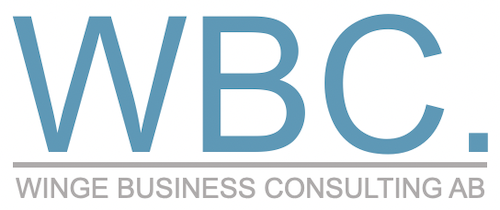
WBC’s 10 Step Model for Improved Information Structure
WBC’s 10 Step Model for Improved Information Structure
There is a significant need for continuous work to renew, adapt, and improve care processes in health and social services. The purpose of such work may include creating order in the information flow prior to the introduction of a new patient centered healthcare information support system. This includes establishing improved working methods, such as coordinated processes that support the patient’s journey through health services, regardless of the organization.
To assist with the information flow, the WBC 10 Step Model was created. The model has been utilized in research projects, in a procurement project with nine regions in Sweden (SUSSA) and in a procurement of a new healthcare information system in Åland, Finland.
Purpose
The purpose of the WBC 10 Step Model is to identify new working methods, improve health and social processes and to capture their health data needs.
The model also aims to quickly deliver small implementable results to achieve gradual development, anchoring, testing, and verification in health and social care operations.
The foundation of the model has been developed through various research projects, assignments, and has been refined over approximately 15 years.
One of the main goals is to create conditions where continuous operational changes enable interoperability and improved standardized and structured information systems.
Expected Values and Operational Benefits:
- Coordinated enrollment
- Coordinated care planning
- Improved patient overview
- Coordinated discharge
- Enhanced overview of the patient’s care situation
- Improved statistics, follow-up, and support for research
- Reduced double documentation
The 10 Step Model can be applied in the short term for streamlining and data cleansing existing templates and term catalogs. It can also be utilized for long-term gradual improvement work, where user requirements are defined and designed for the development of processes and concept and information models.
Decisions regarding which processes to work on and with which healthcare units to participate must be anchored with a reference group and steering group. The decision basis is built on ongoing work that has been continuously anchored with healthcare operations, with the aim of creating benefits and value for patients, as well as creating value for care personnel, for management and for research. Here, IT serves best, that is, to support improved processes and enable the use of structured information.
The work should be led by someone with good knowledge of healthcare processes and of informatics. Resources from healthcare operations should include individuals with strong operational knowledge within the relevant process area.
The choice of operation or process is also crucial for implementation and for achieving results that create value for multiple stakeholders, including patients, care personnel (primary use of data), and also for management and researchers (secundary use of data).
An important part of the work involves identifying several processes and areas to start with, i.e. a few simple areas to test the working methods and to demonstrate the model function.
WBC’s Ten-Step Model
- Step 1: Preliminary Work – Plan and Analyze
During Step 1, preliminary work is conducted, including environmental monitoring (e.g. analysis of care programs, quality registers, regulations, standards, good ideas, innovative services and processes) to create an overview of the situation and to determine the most effective way to address the problem. For example finding and analyzing processes and working methods that follow the patient regardless of healthcare organization, such as coordinated enrollment, coordinated care planning and an integrated and coordinated discharge of a patient.
- Step 2: Initiate the Work – Meet with the Operations
- Step 3: Select and Describe the Process
- Step 4: Identify the Information Needs of the Processes
- Step 5: Define the Concepts and Terms of the Process
- Step 6: Anchoring – Other Local Healthcare Operations
- Step 7: Anchoring in the Operations and Management
- Step 8: Pilot Testing in the Operations
- Step 9: Evaluate the Pilot
- Step 10: Full Implementation
If you would like access to the user guide for WBC’s 10 Step Model, please contact us at info@wingebusiness.se (mailto:info@wingebusiness.se).
Method
In developing the 10 Step Model, inspiration has been drawn from various scientific and established methods within incremental development, change management, process management, service design and IT development. The model is primarily inspired by PDCA, a continuous improvement cycle also known as The Deming Cycle (Walton 1988).
The model is also influenced by agile working methods, by Design Science, which focuses on creating understanding of complex processes and IT needs, and by BPM – Business Process Management. BPM is a process-centered approach to improving operational processes by combining information technology, business processes, and methods for process development and governance. BPM involves collaboration between personnel in the operation and information technologies aimed at realizing efficient, adaptable, and transparent business processes.
Referenser
- Requirement management, TOGAF. The Open Group Architecture Framework. available at: https://en.wikipedia.org/wiki/The_Open_Group_Architecture_Framework
- PDCA- Plan (planera), Do (Genomföra), Check (Kontrollera) och Act (Agera).
- Walton, M. (1988). The Deming management method. Penguin.
- Agil utveckling är ett samlingsnamn för ett antal metoder som kan användas utveckling av verksamheten och IT- lösning i samverkan, kallas även för iterativa metoder.
- Johannesson, P., & Perjons, E. (2014). An introduction to design science. Springer.
- Takeda, H., Veerkamp, P., & Yoshikawa, H. (1990). Modeling design process. AI Magazine, 11(4), 37.
- Business Process Management (BPM) is a discipline in operations management that uses various methods to discover, model, analyze, measure, improve, optimize, and automate business processes. BPM focuses on improving corporate performance by managing business processes. Wikipedia 2018-06-06.
